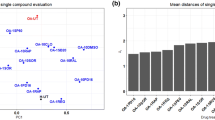Abstract
Objective and Design: Hydroxamic-and carboxylic- acid based matrix metalloproteinase inhibitors (MMPIs) were compared for their potency against various MMPs, pharmacodynamic properties and in vivo efficacy in a model of cartilage degeneration.
Materials and Methods: The MMPIs were evaluated for their ability to inhibit human MMPs using the quenched fl uorescence assay. The ability of the MMPIs to inhibit the degeneration of the knee joint was evaluated in rats injected intraarticularly with iodoacetate. The amount of MMPI in the plasma and cartilage was determined using liquid chromatography/mass spectrometry/mass spectrometry (LC/ MS/MS). Plasma protein binding was measured by ultrafi ltration and unbound MMPI was quantitated using HPLC.
Results: The hydroxamic acid based inhibitor PGE-3321996 and the carboxylic acids PGE-2909492 and PGE-6292544 were potent MMP-13 inhibitors, but only the hydroxamic acid PGE 3321996 demonstrated signifi cant inhibition of knee degeneration in the rat iodoacetate model. Both of the carboxylic acids demonstrated superior pharmacokinetic properties and established much higher plasma concentrations than the hydroxamic acid. However, neither of the carboxylic acids was detectable in the cartilage, whereas, the hydroxamic acid was present in both the cartilage and the plasma. The carboxylic acid based MMPIs also demonstrated higher plasma protein binding (>99 %) than the hydroxamic acid (79 %).
Conclusions: Carboxylic acid-based MMPIs were identifi ed that had superior in vivo plasma exposure compared to a hydroxamic acid inhibitor but lacked in vivo effi cacy in the rat iodoacetate model of cartilage degeneration. The lack of in vivo effi cacy of the carboxylic acid based MMPIs were probably due to their lack of cartilage penetration which was related to their physicochemical properties.
Similar content being viewed by others
Author information
Authors and Affiliations
Corresponding author
Additional information
Received 12 April 2005; returned for revision 24 July 2005; accepted by J. Skotnicki 20 October 2005
Rights and permissions
About this article
Cite this article
Janusz, M.J., Hookfin, E.B., Brown, K.K. et al. Comparison of the pharmacology of hydroxamate- and carboxylate-based matrix metalloproteinase inhibitors (MMPIs) for the treatment of osteoarthritis. Inflamm. res. 55, 60–65 (2006). https://doi.org/10.1007/s00011-005-0014-4
Issue Date:
DOI: https://doi.org/10.1007/s00011-005-0014-4




